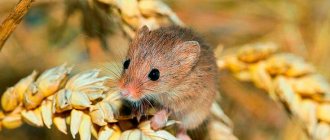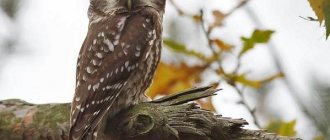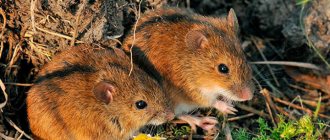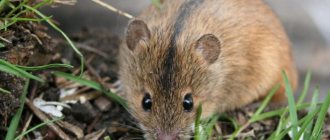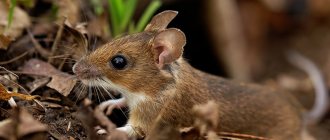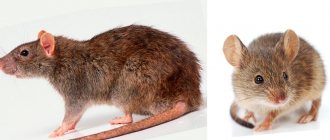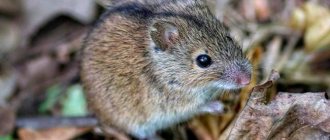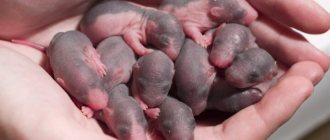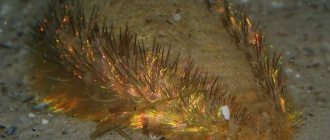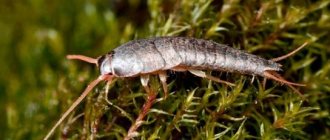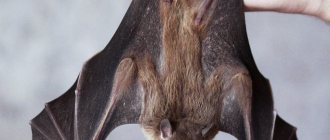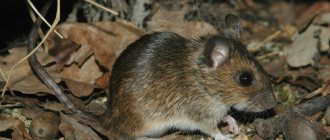Despite the fact that these animals have a rather cute appearance, they are malicious pests of various crops. Moreover, not only farmers suffer from them, but also summer residents, as well as owners of private plots. They are the closest relatives of house mice, which no one wants to see either on the property or in a residential building. They chew on everything that gets in their way.
And yet, these animals are representatives of our nature, which we must protect and coexist in the same territory without creating problems for each other.
Description of the field mouse, belonging to the animal world
The field mouse looks almost like a house mouse, but, according to many, it is much cuter.
She has a more miniature muzzle, a short tail, and neat compact ears. The common field mouse is included in the hamster subfamily, which explains its external similarity to these domesticated rodents. This small animal has a discreet coloration, which allows it to remain inconspicuous to numerous predators. It is difficult for large birds to see a mouse from the air - it blends in with compacted grass, bushes, and soil. And terrestrial predators have difficulty distinguishing it in thickets of rye or wheat. A person rarely manages to detect the mouse itself or its offspring, but only traces of its invasion:
The search for the pest is hampered by its nocturnal lifestyle and incredibly sensitive hearing. During the day it is almost impossible to catch a vole destroying stocks. If she nevertheless decided to make a raid during the day, she would definitely pick up sound vibrations at a distance of several tens of meters. And she only needs a few seconds to retreat from the “crime scene.”
Length
This mouse with a wide black stripe on its back is larger than the rodent that lives in houses and outbuildings. With large food supplies and the absence of predators from which one has to constantly run away, the animal can reach 12 cm in length. This is approximately 30–75% of the total size. The mouse has a flexible, mobile body, so it can easily:
But the length of a rodent is not always an advantage - predators have a greater chance of detecting and capturing prey.
Tail
The tail of voles is long, for example, in adults it reaches 8–10 cm. From a distance it may seem that it is completely naked, but this is not so. The mouse's tail is covered with:
The fact that it is cold in rodents is not true. Its temperature is the same as that of the entire vole body. The tail can be cold, but only if the animal is frozen.
This part of the vole is a kind of thermostat. In hot conditions, its blood vessels constrict, slowing down blood circulation and helping to cool the body. In winter, on the contrary, they expand. The temperature of the blood passing through them rises. Entering the body, it quickly warms it.
The tail also serves as a balancer for the vole, allowing it to maintain balance when crawling along thin tree branches. And in a fight, a rodent can use it to fight off small predators - rats and birds.
Coat and color
According to the zoological description, the vole differs from other species of mice by a wide stripe on its back. It starts between the ears, runs throughout the body and ends in the tail area. The area of the brown stripe has the longest, thickest hairs. They are quite rigid, unlike the voles located on the stomach. There are hairs:
Therefore, it is much more difficult to see a vole from above than from below. The color of the animal varies somewhat depending on the genus. Thus, the vole, which lives in the central zone of our country, has a reddish tint to its fur. This species of mouse remains inaccessible to predators in wheat and rye crops, on loamy soil and the banks of water bodies. Even in photos taken at a distance of 4–5 meters, it is almost impossible to see a rodent against this background.
Torso and limbs
Even a small vole has a mobile, muscular body. The mouse easily climbs the stems of cereals, flexible branches of bushes and trees, maintaining excellent balance. The mouse begins to store fat closer to autumn in order to wait out the harsh winter without any problems. The rodent's limbs are short - the length of the largest specimen does not exceed 3 cm.
Each paw is equipped with claws dulled from regular digging of the ground in search of food. They are powerful enough to resist a predator attack. With the help of its claws, the vole easily climbs not only trees, but also the brickwork of houses and barns. In newborn mice they are thin and sharp, but as they grow older they become flat and wide.
Head
The field mouse's ears are round and small, and its black eyes are set close to each other. The muzzle is pointed, but not as pointed as that of rodents living in houses, barns, and courtyard buildings. The hair on the vole's head is shorter and resembles bristles when touched. In some species, the hairs on this part of the body are somewhat lighter and thinner.
In general, it is impossible to distinguish a male field mouse from a female by appearance. They do not differ in the length of the body and tail, the shape of the head or ears. The only difference is the 4 pairs of nipples on the belly of the female vole.
Reasons for appearance
These small animals constantly migrate in search of food. You can always find something to profit from at your dacha or garden plot. Food can be found not only in the summer, when it is grown by the owner, but also in the winter, when the owner stores food for the winter. Therefore, when it is cold, warehouses, basements, cellars, etc. become the most attractive. In addition, a vole is able to get into a person’s home. She will do well in the kitchen, where she can find leftover food and water for herself. It penetrates into the house through various cracks in the floor, through open windows and doors, if there is no obstacle for it.
Determining that a mouse has appeared in the house is not at all difficult. Its presence is indicated by a peculiar “mouse” smell, as well as the presence of remains of this animal’s vital activity on the floor or in other places. In the garden it is also not difficult to determine the presence of a vole by the presence of burrows. In addition, they are constantly gnawing on something. This is due to the fact that a rodent’s teeth grow throughout its life and need to be ground down. In winter, the mouse feeds on the bark of various shrubs, as well as fruit trees, which causes serious damage to cultural plantings.
Features of reproduction
The Polish mouse becomes mature after 3 months. A young female gives birth to 1 to 3 offspring, and grows up to 12 in one year. Vaginism lasts for about 25 days.
The children are described as blind, naked, and absolutely hopeless. A photo of the field mice after the populace is presented below. The female gives birth to young offspring for up to 1 month, then the young continue to breed. They farm their own living things and extract hedgehogs.
Reproduction of the mouse After 9-10 days after the canopy, the mouse is again ready for watering. Each river produces new offspring up to 4 times. The favorable period for this begins with the grass and continues until the harvest.
How long do they live?
Field mice do not live long - only 6 months. They become sexually mature after 3 months. Gestation of offspring lasts up to 25 days. The mouse is born blind, without fur, and unable to take care of itself.
The female takes care of the young for 4 weeks, and then the pups move on to adulthood. Then they are forced to arrange their own housing and find food for themselves.
Pest control methods
Due to the danger to human life and health, as well as to all agriculture, the mouse is exterminated in every possible way. To limit the number of individuals there are the following methods:
- passive-preventive, in which mice are repelled from areas and objects of human activity;
- active, which uses methods for the complete destruction of pests.
The smell of a number of plants repels field mice; such protection is classified as a passive type of protection.
Repellent method
Plantings of odorous plants that mice cannot tolerate are effective in repelling them. These include:
- calendula;
- garlic;
- onion;
- sagebrush;
- mint;
- tansy and other herbs and plants with an intense odor.
Essential oils of plants are also used. You need to moisten cotton pads in liquid and place them in places where mice are expected to appear. You can use ammonia or kerosene. Rodents also try to avoid tree ash.
If you do not want to harm field mice, you can use a sonic repeller
Vibrating or ultrasonic devices are considered a more humane method of repelling, because of which rodents feel uncomfortable and run away. Such devices can be found in specialized gardening stores, or you can also make them yourself.
To make the device, you need to bury a stake in the ground, onto which a plastic bottle is placed. In windy weather it will spin and rattle, scaring away rodents. By analogy with a bottle, you can use tin cans or even bells.
It is unlikely that a colony of pests will remain in an area that is under the supervision of a hunter cat.
Physical destruction
In such a “war” any means are good. In a situation where the harvest is in danger, even the most extreme measures are justified. In folk methods of getting rid of mice, there are several options for battle:
- Plaster thrombus. You need to mix flour and gypsum (or lime) in equal parts and add a little salt. A mouse that eats this mixture will develop a blood clot in its stomach and die.
- I. In pesticide stores you can buy special anti-rodent preparations. They are presented in the form of granules or tablets. You must strictly wear gloves when laying out the poison, otherwise cautious mice will not even approach the bait. Some poisons take time to act and poisoned individuals infect others during this period. If there is a cat on the property that can eat a dead mouse, it is better not to use this method, otherwise the pet may also die.
- Mechanical destroyers. The method using mousetraps is only effective when there are only a few mice living in the area.
- Traps. People invent different types of devices for catching mice. For example, glue is applied to the base and bait is placed in the center. The mouse, having approached the food, becomes glued and cannot escape. You can also buy a trap in a store.
Traps and baits should be laid out with gloves, the smell of a person repels mice
Sometimes mice cause such harm to a household that a real war is waged against them. It is better to use chocolate, meat or bread dipped in unrefined sunflower oil as bait rather than cheese.
Consequences of complete extermination
During the years of demographic decline of mice, populations of owls, foxes and other animals and birds that feed on mice suffer. Some species of voles are considered rare and are protected by law. These are the mice:
- Muyskaya;
- Central Kashmir;
- Balukhistan;
- Taiwanese;
- Evoronian;
- Japanese;
- Mexican.
Prevention measures
To reduce the likelihood of voles becoming infested, various methods are used. Some of them:
- get a pet cat or dog;
- do not drive away natural mouse enemies from the site;
- clear the area of rubbish in which rodents can live (old furniture, boards, fabrics, etc.);
- loosen the ground, destroying mouse passages;
- Get rid of any garden debris that might harbor mice.
For effective control, it is better to use several methods, which also include prevention.
Any living creature living on the planet occupies a certain place in the ecological sphere. By eating plant seeds, mice control the growth of grass, which prevents trees from emerging. This way the forest is preserved. Rodents are also an important link in the predator food chain.
Ways to fight and protect
The main difficulty in the fight against field mice is that they live in places hidden from human eyes. This means that catching or poisoning them is quite problematic. Therefore, the primary task in the fight against voles is the need to find and destroy their housing . You can do this in the following ways.
We drive mice away from the territory
First of all, you need to try to drive rodents out of the area:
- Mow tall grass, remove dry leaves and weeds. You also need to get rid of branches and piles of plant debris. All of these are great places to build burrows.
- Fruits that have fallen from the tree should not remain on the site, as they are an easily accessible source of food for voles.
- Digging up the area can help get rid of holes and underground passages.
- To prevent rodents from damaging fruit trees, a fine mesh net is dug into the ground around the trunks. The same can be done around the perimeter of the entire site.
We use repellers
The use of special repellent devices can speed up the process of expelling voles from your territory. They are installed around the perimeter of the site and provide protection from moisture.
We use mousetraps
Ordinary mousetraps can also help in the fight against mice. Experienced gardeners recommend installing these devices on the site in early spring and late autumn , since it is at this time that mice reproduce most actively. To prevent harm to pets, mouse traps can be covered with a box; this will not stop mice in pursuit of the bait.
We use poisons
At the end of winter and beginning of spring, the use of poisons is very effective. At this time, mice are hungry and not very picky about food. Poisons are placed directly in burrows.
Population and species status
Photo: Water vole mouse
As a species, the water vole poses the least conservation concern, although water management practices have undoubtedly altered its habitual habitat, and its current range is probably similar to that occupied before European settlement.
The water vole is considered a pest in irrigation areas (such as along the Murray), where it lurks in canals and other water and irrigation structures, causing leakage and sometimes collapse of structures. Some sources, however, consider this damage to be less significant than the damage caused to freshwater crayfish, whose populations the water vole helps control. However, the water vole is listed as vulnerable in Queensland (the Nature Conservation Act 1992) and nationally (the Environment and Biodiversity Conservation Act 1999) is recognized as a top conservation priority under the Priority Action Framework Back-Track in Australia.
The water vole is primarily threatened by habitat loss, fragmentation and degradation. This has resulted from urban development, sand mining, land reclamation, wetland drainage, wildlife, recreational vehicles, polluted water discharge, and chemical pollution (runoff from agricultural and urban lands, exposure to acid sulfate soils, and coastal pollution incidents). These degradative processes reduce potential feeding resources and nesting opportunities, promote weed invasion, and increase predation by wildlife (foxes, pigs, and cats). The water vole is a terrestrial, nocturnal rodent. It is found in a wide variety of aquatic habitats, typically coastal salt marshes, mangroves and adjacent freshwater wetlands in Australia. It is a good colonizer and can be expected to be a reasonable indicator of the presence of its largely aquatic prey and the general quality of the water bodies in which it is commonly found.
Tags:
- Arvicola
- Euarchontoglires
- Waterfowl
- Deuterostomes
- Rodents
- Rodents
- Bilaterally symmetrical
- Animals of Australia
- Animals of Australia and Oceania
- Animals of Asia
- Animals of Africa
- Swamp animals
- Animals of reservoirs
- Animals of the mountains
- Animals of Eurasia
- Animals of Europe
- Animals of Kazakhstan
- Animals of Mexico
- Animals of Mongolia
- Animals starting with the letter B
- Animals starting with the letter P
- Animals of New Guinea
- Lake animals
- Animals of Papua New Guinea
- Animals of the rivers
- Animals of Russia
- Animals of North America
- Animals of the Subtropical Zone of the Northern Hemisphere
- Animals of the Subtropical Zone of the Southern Hemisphere
- Animals of the Subequatorial Belt of the Northern Hemisphere
- Animals of the Subequatorial Belt of the Southern Hemisphere
- Rainforest Animals
- Rainforest Animals
- Animals of the Tropical Zone of the Northern Hemisphere
- Animals of the Tropical Zone of the Southern Hemisphere
- Animals of the Temperate Zone of the Northern Hemisphere
- Animals of the Temperate Zone of the Southern Hemisphere
- Animals of South America
- Animals
- Mouselike
- Placental
- Vertebrates
- Voles
- The smartest animals
- Smart animals
- Hamsters
- Chordates
- Ghostostomes
- Quadrupeds
- Eukaryotes
- Eumetazoans
Harm from the life of a vole
By constructing burrows and digging tunnels in the ground, field mice damage the root system of plants, thereby contributing to their drying out and wilting. Mice eat root vegetables, succulent roots, and bulbs, which is why the crop dies. Voles damage plantings of trees and shrubs by gnawing young bark from trunks. They also feast on the above-ground parts of many plants, which is why they die.
Among the favorite foods of voles are seeds and grains of cereals, so mice spoil supplies in granaries and also gnaw vegetables stored in cellars and vegetable stores.
Diet
The diet of field mice is quite varied and varies depending on the “place of residence”.
The animal feeds very actively and can eat as much food in a day as it weighs.
- In the steppe. The vole usually feeds on grasses and plant roots, insect larvae, and cereals;
- In the meadow. The field mouse eats succulent stems and bulbs of plants, grass seeds, various berries, and small insects;
- In the forest. Field mice can often be found on forest edges; they eagerly eat tree bark, green leaves, buds, young shoots of bushes, mushrooms, nuts and berries;
- In the taiga. The field mouse, which lives in Siberian forests, is slightly different in color; its fur has a reddish tint. In the taiga, the vole has something to eat: lingonberries, cranberries, nuts, various small insects, cones, buds and tree leaves.
What do mice eat in captivity?
Some people are crazy about pet, tame rodents. Usually these individuals are small in size and white in color. They are easy to train, get used to people and easily coexist with them. What does a white mouse eat? Yes, with anything. This can be a variety of foods produced by the industry. They contain balanced mineral supplements and grains so that your pet develops properly and always remains healthy. If you want to feed your animal real food, you can give it a variety of grains and grains. Fatty and spicy foods should be excluded. Feed your baby raw mealworm meat once a week.
Harm to humans
Mice cause great harm by gnawing everything they come across. The situation is complicated by the fact that they multiply quickly. Voles are a threat to crop production. In their habitats, germination rate decreases and the yield of grain, fruit and berry crops decreases. It is necessary to get rid of mice as quickly as possible - this is the only way to save the harvest. Voles are carriers of parasites and many diseases, some of which are dangerous to humans and domestic animals.
How does a mouse harm agriculture?
Voles cause the greatest damage to various types of grain crops. First they eat seeds, then young shoots, then ripened grains. Just a hundred rodents can reduce the yield from a hectare-sized field by half. They destroy stocks of grain, potatoes, beets, tomatoes, cabbage, and carrots in storage. Once in a cellar, basement or greenhouse, mice eat everything indiscriminately.
The vole eats root crops, flower bulbs, bark, roots, shoots, stems, and leaves of plants, which leads to their death, stunted growth and reduced yield. The animals gnaw the trunks of fruit and ornamental trees. Without the bark, which provides them with nutrients and moisture, they wither or die if it is destroyed in a circle. Mice eat hawthorn, apple, and cherry with particular pleasure.
What diseases does a rodent carry?
The field mouse is a carrier of the following diseases:
- Leptospirosis. The most common infection in the world, the pathogens of which parasitize animals. It affects the liver, spleen, lungs, blood vessels, and central nervous system, but most deaths occur due to kidney damage and the development of renal failure. The main route of infection is through damaged skin.
- Salmonellosis. Acute and dangerous intestinal infection. Characterized by weakness, chills, fever, nausea, vomiting, intoxication and dehydration.
- Hemorrhagic fever. A disease of a viral nature. The pathogen damages blood vessels, causes their inflammation, which causes hypoxia to develop, affecting the heart, lungs, brain, and kidneys. It is fraught with the development of hemorrhages, acute renal failure, coma, infectious-toxic shock.
- Brucellosis. The musculoskeletal system most often suffers from pathogens, but they can affect many systems and organs. The disease can become chronic. Symptoms vary depending on the site of infection. The most characteristic are fever, muscle and joint pain.
- Tularemia. The disease occurs infrequently - no more than several hundred cases per year in Russia. It affects the mucous membranes, lymph nodes, skin, and lungs. Causes fever, intoxication, weakness, muscle and headache, and can be complicated by pneumonia, arthritis, meningitis.
- Foot and mouth disease. A viral disease with a severe course, the symptoms of which are fever, body aches, headache, painful urination, swollen lymph nodes, salivation, erosion on the mucous membranes and skin.
Infections are transmitted not only by a bite. You can become infected by inhaling air containing particles of animal fur and feces, or by removing mouse corpses without protective gloves. Viruses and bacteria can be contained in products gnawed by mice and later eaten by humans, so if traces of mouse activity are found in cellars and other storage areas, the remaining supplies should be destroyed.
Natural enemies
When the mouse population decreases, the number of owls and foxes living in the same territory may also decrease. It is voles that predominate in their diet. These rodents are large enough to feed, and when a nest or hole is discovered, the predator gets a lot of food. Owls are also nocturnal and, thanks to their unique hearing aid, can detect the slightest movement of a rodent several tens of meters away. Scientists suggest that these large birds are able to discern even the shine of voles' eyes even in the dark.
Domestic cats will not disdain to snack on mice either. It is not without reason that when traces of voles were discovered in barns, they resorted to their help. Cats are considered better mouse catchers than cats. But there are no statistical data on this matter.
Voles are ideal as pets - they are cute, playful, and live up to 7 years, just like guinea pigs. You can feed mice with grain mixtures, young fresh plants, and thin cut tree branches. But voles pose a threat to agriculture, destroying vast areas of cereal crops and root crops.
Appearance of a rodent
The field rodent has many varieties. Their relatives are mice such as:
- ordinary;
- red (lives in Asia);
- forest (lives in North America and the forests of Eurasia);
- underground (lives in the city sewerage system and in adjacent areas).
Depending on the region and habitat, you can find different types of field mice.
All these mammals belong to the genus of voles. They have elongated snouts, black eyes, pointed ears and a long tail. The length of the body without a tail reaches 10−13 cm. Its weight does not exceed 15 grams. The animal has wing-shaped plates on its cheekbones that create the effect of “dimples.” The length of the paw and foot is about 2 cm. The claws are small and dull from regular digging.
The fur on the belly of the vole mouse has a light gray tint, the rest of the body is brownish. On the back there is a characteristic dark stripe running along the entire spine. The coat is coarse and short. Its color changes depending on the age of the individual. The old field mouse turns gray and becomes lighter than the young ones. The male does not differ from the female in external characteristics.
This is interesting: what mice eat in nature.
This video tells interesting facts about mice:
Visually, the house mouse differs from the field mouse in several ways.
| Brownie | Field |
| Body length up to 10 cm | Body length up to 13 cm |
| The fur on the back is dark gray | The fur on the back is brown, with a dark stripe running along the spine. |
| Belly white | Belly light gray |
| Short muzzle, rounded ears | Pointed muzzle, triangular short ears |
Field rodents live both in gardens and homes, as well as in the wild.
field rat
The ground or field rat has nothing in common with ordinary pests and is a mouse type. However, its size is similar to that of ordinary rats. The body length of an adult reaches 25 cm in length and weight up to 0.5 kg. The field rat destroys everything that gets in its way. She likes both cultivated plants and weeds.
If such a pest is infested in the garden, then there is no point in counting on a good harvest. She eats root vegetables and greens, and also likes to wreak havoc on flower beds. This rodent is not repelled by saffron, which has a specific aroma.
How to draw a needle mouse with a pencil and pen step by step
Using a hard pencil, draw the outline of the mouse.
Step 2
Use a black ballpoint pen to darken the eyes, leaving room for highlights. We outline the ears and lower part of the mouse along the contour.
Step 3
Use a soft pencil to darken the pupils, as shown in the figure. After this, shade the mouse and shade it with a piece of paper. Next, we darken the ears and draw the fur on the forehead with short strokes in the direction from the nose to the top of the head.
Step 4We detail the fur, while darkening the pattern along the contour
Pay attention to the direction of the strokes. Draw a mustache with a well-sharpened pencil
Step 5
Using a black pen, draw a shadow under the mouse. Then shade the area around the black shadow with a soft pencil and blend it with a piece of paper.
What do cubs, reproduction and offspring look like?
Voles are fertile animals. Females give birth up to six times a year, and up to 7 cubs can be born. They are born absolutely helpless, without hair, unable to distinguish between surrounding objects. The female takes all care of the offspring - warms it with her body, feeds it, protects it from attacks by predators who love to feast on delicate little mice.
Vole pregnancy lasts about three weeks. And after ten days, the mouse is again ready for fertilization, even despite the helplessness of newborns. Cubs reach sexual maturity after three months. But long before that, they learn the skills of finding food and protecting themselves from predators.
What do decorative mice eat?
Rodents living in forests feed on cedar and hazel nuts, maple and beech seeds, acorns, and small insects. And animals living near bodies of water prefer to eat leaves, roots and stems of plants, berries, grasshoppers, caterpillars, larvae, spiders and other invertebrates. House mice living near people willingly adapt to the human diet and eat bread, meat, dairy products, and sweets.
Animals living in the wild drink very little. The mouse body independently produces water by breaking down food. Additional sources of moisture are fleshy plant leaves, fruits, and vegetables.
https://youtube.com/watch?v=pnV9AdImsh8
Several shelters are equipped inside the house, preferably at different heights. All types of mice are very active and run up to 40 km a day in their natural environment, so the terrarium should have a running wheel. You can supply water to rodents through a hanging drinking bowl or pour it into a small saucer.
A decorative mouse is an animal that easily gets cold and overheats. It is better to place the animal’s house away from the window, protect the cage from drafts and bright sunlight. The ideal temperature for these rodents is 20-22⁰С.
All animals from the Mouse family are prone to obesity, so you need to know what the ornamental mouse eats. The basis of the animal’s diet is cereals: barley, wheat, corn, sorghum. The grain should not be ground. Usually house mice are very small and eat up to 1 tsp per day. stern.
The animals' favorite treats are sunflower seeds, pumpkin seeds, caraway seeds, walnuts, peanuts and hazelnuts. Vegetables and fruits are necessary in the animal's diet. It is better if the vegetables are green: cauliflower, lettuce, cucumber, zucchini, broccoli, parsley. And the fruits are not very sweet and juicy: apple, banana, quince, pear, plum. Occasionally you can give bread and egg whites.
Features of behavior
Voles are quite active living creatures, as their metabolic process is quite fast. They need to eat quite often, as they use up their energy quite quickly. Mice have a hard time withstanding hunger, and even more so lack of water. Without food and water, a vole mouse can live no more than 1 week.
Despite such facts, the vole mouse adapts quite quickly to new conditions. Rodents move in certain ways, and they mark their territory with urine. They show their main activity when it gets dark. Under certain conditions, rodents become more active during the day.
Mice are quite cautious living creatures. They react to the slightest sound or rustle, quickly running away to their shelter. This indicates that rodents have many natural enemies and danger lurks at every turn.
The pest tries to constantly stay as close to its hole as possible, moving away from it only a few meters. As a rule, rodents move in tall grass, under bushes or in the shade. Each individual has its own territory marked. They prefer to live in flocks, controlled by dominant males and females.
Interesting to know! The lifespan of individuals in natural conditions is no more than 1 year, although scientists believe that mice can live up to 7 years. The thing is that mice have many natural enemies. In artificial conditions, the average age of rodents is about 3 years.
Field mice
Types and description of voles
Mice-voles belong to a large species of rodents of the genus gray voles.
Underground
Description:
- Adults reach 10.5 centimeters;
- They have a rather short tail - 1/4 of the entire body;
- The back is dark gray in color, the sides are slightly lighter, the belly is an even gray color;
- The tail is gray-brown above and gray-white below.
Habitat:
- Lives in the European part of Russia;
- Prefers deciduous forests with abundant vegetation.
What it eats:
- Bulbs;
- Rhizomes;
- Insects;
- Acorns;
- Nuts.
Reproduction:
- Up to four pregnancies per year;
- From 4 to 6 mice are born.
REFERENCE: The lack of usual food will force wild animals to destroy agricultural land.
Distinctive features:
- The eyes and ears are smaller, unlike most representatives of the genus;
- Females have only four nipples;
- There are five soft pads on the hind legs;
- There are many different passages in the equipped burrows.
Damage caused:
- With a small harvest of acorns, wild boars and bears can be left without a significant amount of their usual diet;
- In low-yield times, they pose a great threat to grain and vegetable storage facilities.
Brazilian (acodon)
Description:
- Body size 12 centimeters;
- Gray coat, white or brown undercoat;
- Long ponytail.
Lives in South America. It feeds on plants and can eat both tops and roots.
Reproduction:
- Bears offspring twice a year;
- From 4 to 5 pups are born.
Damage caused:
- Destroys crops in agricultural fields;
- Spoils winter supplies that have not been heat treated.
REFERENCE: It is the most common species among small rodents in South America.
Dark vole
Description:
- The head is round in shape;
- Compact body;
- The tail makes up 1/3 of the whole body;
- The skin is a rich gray color;
- Small ears with elongated pads on the hind legs.
Habitat:
- Lives in the European part of Russia - in the western and middle regions of Siberia;
- Prefers meadows, river openings, clearings, uncultivated areas of vegetable gardens and agricultural lands.
What it eats:
- Young grass;
- Bark;
- By shoots;
- Rarely insects.
Reproduction:
- Reaches sexual maturity at the age of 1-2 months;
- Bears three offspring per year;
REFERENCE: They live in colonies, united from several broods of one pair.
Six pups are born, occasionally 15.
Damage caused:
- They chew off the bark, and as a result, young trees die;
- Destroying stocks in storage facilities.
HELP: Partially damaged vegetables begin to rot.
Narrow skull
Description:
- Quite a small head in relation to the body;
- The ears are hidden in gray-brown fur;
- Light inclusions from ocher to dark brown;
- Long ponytail;
- An adult reaches 12.5 centimeters.
Habitat:
- Lives in Kazakhstan, Central Mongolia, Bashkiria, southern regions of China, western Urals, Amur and Tien Shan regions;
- Prefers open areas of mountainous regions and alpine meadows.
What it eats:
- Bears up to five offspring per year;
- From 5 to 7 pups are born.
Distinctive features:
- On the tenth day of life they are able to look for food themselves;
- They stock up on a lot of food for the winter.
Damage caused:
- Destroys grain fields;
- Damages gardens.
Flat skull
Description:
- Body size up to 12.5 centimeters;
- The skull is flattened, its height is half its width;
- The area between the eyes is depressed;
- Long coat, ash-gray with brownish coloring;
- The abdomen is slightly lighter than the main color;
- Ears are clearly visible, long antennae;
- The tail is yellowish or white.
Habitat:
- Lives in Altai, in the Kazakh Highlands, Mongolia;
- Prefers coastal areas of rivers and swampy areas.
Reproduction:
- Brings up to three offspring per year;
- From 5 to 7 pups are born.
REFERENCE: When stocks decrease, it encroaches on green shoots.
Distinctive features:
- Quite agile: in a jump it covers a distance of 50 centimeters, while rising 40 centimeters from the ground;
- Stores up to 10 kg of food in its burrow;
- In rocky areas, it seals cracks with pebbles, using its droppings as a bonding agent.
Lifestyle and habitat
Mice reproduce quickly, they are hardy and adapt to almost any natural conditions. Therefore, you can meet them in any corner of the planet. They live in Siberia, the Volga region, Krasnodar and Stavropol territories. Vole nests are found even in northern India and in the arid regions of Mongolia and China. Mice raid crops in South and North America and the Scandinavian countries. But they are not able to live for a long time in a hot climate, therefore, starting from the desert regions of North Africa, rodents are not found.
Voles are animals that do not hibernate. That is, mice need a supply of grain for the entire winter. Here they do not limit themselves; they drag an abundance of food into their holes. One mouse can eat up to 4 kg of grain, which it simply cannot eat. Most of it dies, but at the same time releases the heat necessary to warm the winter shelter and nurse the offspring.
It is not entirely true that voles live only in deep, winding burrows underground. Many mice choose the hollows of trees, the places between their huge roots. Rodents thrive in haystacks that are not collected for the winter and in the attics of residential, including abandoned, premises. They can be found in barns, cattle sheds, poultry houses and pigsties.
Voles intuitively sense danger, so they do not build nests near rivers. After all, when they overflow their banks in early spring, mouse holes can be flooded along with their inhabitants.
Types of garden and country pests
Frequent guests at the dacha are field mice; it will be easier to find out how to get rid of rodents most effectively if you become familiar with the habits of mammals of this species. There are over 140 species of animals in this family of hamsters, but common voles explore the garden plot. Their habitat is forest-steppe regions. The vole eats everything plant it comes across - succulent plant stems, their seeds, shoots, bulbs, roots and tubers, and tree bark in winter. Therefore, if you find flowers in a flowerbed or plants in a garden withering, examine their root. If it is damaged, it means that there are voles in the dacha; you need to figure out how to get rid of rodents and protect the plants.
This type of pest is extremely voracious. Moreover, the vole stores food for the winter, so it will drag everything from the barn or shed that is not lying well. You can take advantage of this when choosing a method for getting rid of mice in your country house and garden.
Shrews are a type of insectivorous animal that is very similar to mice. But instead of a gnawing mouthpart, mammals of this family have a proboscis. They inhabit any landscape. The main condition for comfortable living is moist soil. It is in them that it is easier for the shrew to dig holes. They rarely settle in human dwellings. On a personal plot they can nest under dead wood, in stumps or fallen tree trunks. This ground mouse feeds on insects and can eat frogs and even voles. On the one hand, the animal clearly brings benefits to the site. But if you take into account her gluttony - she eats 2 times her own weight in food per day - then the damage is obvious;
- eats populations of earthworms that maintain natural soil aeration;
- digging up a personal plot, undermining the roots of plants;
- disrupt the quality of the soil.
Therefore, if you are wondering how to get rid of mice in your dacha, also take an interest in how to install protection against shrews. But the house mouse will take great pleasure in encroaching on the harvest that has already been harvested. The name of the mammal is not accidental. The fact is that the uninvited guest feels comfortable in warmth and dryness. Therefore, with the onset of cold weather, it hides in attics, supply warehouses, sheds, storerooms and barns. It is warm and dry here, and there is a lot of food - house pests are omnivores (they can even taste soap and candles). It is worth noting that if you have solved the problem of how to deal with mice and voles in the country, then similar methods of control for house guests will not work. Under favorable conditions, one female will give birth to unprecedented offspring over the winter - from 5 to 14 mice 2-4 times.
The house mouse is not only prolific and voracious, but also dangerous for household members. It spreads bacteria throughout the apartment and house, creating unfavorable conditions in living spaces. Therefore, when planting and harvesting (storing) crops, find out in advance how to deal with mice in the garden, home and pantry. It is necessary to react quickly and mercilessly to the appearance of pests, otherwise, having found favorable conditions for themselves, the population of mammals will increase to incredible sizes.
Lifestyle
In summer and spring, field mice are active in the evening and at night. In autumn and winter they can be active during the day. They do not hibernate.
How mice and voles overwinter:
- Natural shelters or earthen passages can be used as burrows.
- Their burrows reach 3-4 m in length and have 2-4 exits, one of which leads to a watering hole.
- Dwellings must have a nesting chamber and 2-3 pantries in which winter supplies are stored.
- The storerooms are located at a depth of 0.5-1 m.
IMPORTANT! Rodents that live in swampy areas do not dig burrows. They build nests. The main material is grass. Such dwellings are usually located on tall bushes.
How to draw a mouse with a pencil step by step for beginners
Using light pressure, draw the line of the base on which the mouse sits and the straight edges of the wooden block. Draw a line for the abdomen as if the mouse were sitting on a piece of wood. Draw the arches of the hips, paws and neck. Draw a circle of the head above the neck. Draw curved lines for the ears and nose. Draw the arc of the spine from the ear to the base line.
Step 2
Using light pressure, draw the line of the base on which the mouse sits and the straight edges of the wooden block. Draw a line for the abdomen as if the mouse were sitting on a piece of wood. Draw the arches of the hips, paws and neck. Draw a circle of the head above the neck. Draw curved lines for the ears and nose. Draw the arc of the spine from the ear to the base line.
Step 3
Define the outline with a blacker stroke. Lightly apply the pencil to convey the texture of the fur. Paint in the eyes, ears and tail. Paint the floor and paint the wood texture. Don't forget the cheese!
Interesting facts about mice
The following facts demonstrate how amazing house mice are:
- Contrary to popular belief, these decorative rodents love sweets and lard, not cheese, but eating such food is harmful.
- The mouse genome is almost 80% identical to the human genome.
- Each mouse family has its own unique smell, thanks to which rodents determine their own membership in a particular group.
- House mice have very good hearing, but poor eyesight. They perceive sounds with frequencies up to 100 kHz.
- In a stressful situation, the mouse secretes a substance with a pungent odor along with its urine. It warns relatives of danger. When other rodents sense it, they become afraid and run away.
Diet
The diet of field mice is quite varied and varies depending on the “place of residence”.
The animal feeds very actively and can eat as much food in a day as it weighs.
- In the steppe. The vole usually feeds on grasses and plant roots, insect larvae, and cereals;
- In the meadow. The field mouse eats succulent stems and bulbs of plants, grass seeds, various berries, and small insects;
- In the forest. Field mice can often be found on forest edges; they eagerly eat tree bark, green leaves, buds, young shoots of bushes, mushrooms, nuts and berries;
- In the taiga. The field mouse, which lives in Siberian forests, is slightly different in color; its fur has a reddish tint. In the taiga, the vole has something to eat: lingonberries, cranberries, nuts, various small insects, cones, buds and tree leaves.
Who eats voles
The field mouse is quite prolific and this is very appropriate considering how many natural enemies it has.
Who eats mice:
- birds of prey: owls, hawks, falcons;
- foxes;
- martens;
- caresses;
- ferrets;
- hedgehogs;
- snakes;
- cats.
The weasel is also dangerous for rodents because, thanks to its flexible and narrow body, it can freely penetrate nests and eat baby mice.
